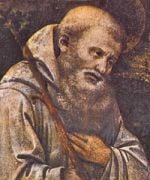Our Lady of the Philippines
by Zsolt Aradi
Magellan, the great Portuguese sailor of the sixteenth century in the service of the Spanish Crown, did not know where his adventurous journey would end. He had vague ideas about a passage between the Atlantic and the Pacific oceans, and after much adversity he found it. And he found much more; he found a chain of islands in the Pacific, he found unknown races, and he made one of the great discoveries of human history. The first Filipinos whom Magellan and his crew encountered were friendly, but on one of the islands a sudden savage outburst killed the explorer. The Filipinos were converted by Spanish missionaries without major incident, but in spite of the conversion on one part of the islands, great dangers loomed over other parts. Missionaries and early Filipino Christians were instrumental in Christianizing large areas of the Pacific, but for quite a time their own country was divided in its beliefs. Islam had already set foot on Mindanao and in a distorted form developed a special hatred against anything Christian.
The Spanish Church and missionaries brought the entire treasure of Western civilization and religion to the willing, friendly natives, and with great zeal laid the foundations for a new culture. The cult of the Madonna played a great part in the plans of the missionaries, as is evident from early documents, churches, and the veneration of Our Lady.
With the decline of Spanish might, however, religious life suffered too. The fate of the Spanish Empire reflected upon the religion brought by Spain's missionaries; there were very few priests of Filipino origin, the religion was identified with Spanish power, and eventually, the great masses felt themselves abandoned. Large areas remained without priests and this accounts for the fact that in the nineteenth century about a million Filipinos created a schismatic Catholic Church which, although it still exists today, has declined and exerts little influence.
With the improvement of the general situation of the country and with the coming of independence Christianity regained its former importance. The International Eucharistic Congress held in 1934 in Manila is a case in point. During these critical years of transition the foundations laid by the Spanish missionaries proved salutary. The forgotten and isolated masses believed in God, but had forgotten most of the practices of their religion except the veneration of the Mother of God. There is nothing miraculous in this fact though it helped later on in an extraordinary way to renew Christianity. For centuries, poverty and disease have dominated large parts of the Philippines. Now with this new start, the Virgin brings beauty and hope and practical help in the midst of their tragic situation.
Antipolo near Manila is the major sanctuary dedicated to Mary. Its church dates back to 1632, but was not completed until 1650 because of the rebellions, which spread all over the country. It was set on fire but failed to burn. The rebels were overcome by fear in face of this wondrous event. The statue of Our Lady was installed in 1653. It was carved of wood, which has discolored over the course of years. It stands atop a shrine of solid silver.
Antipolo, the national shrine of the Philippines, sees hundreds of pilgrims every day throughout the year; and during the May celebrations, some twenty thousand persons visit the shrine daily. One hundred thousand pilgrims attend the annual crowning in which, following a colorful procession, a crown of precious jewels is placed with great solemnity upon the Virgin's head.
Another city with an important shrine is Zamboanga on Mindanao Island. Some decades ago it was still the scene of events, which recall the ancient hatred of Moros for Christianity. The island is inhabited by Mohammedan Moros who still practice the so-called juramentado. This is a form of savage religious fanaticism whereby a chosen Mohammedan Moro mixes in a crowd celebrating a Christian holy day. He must kill as many persons as he can and must die in the act of killing. According to the belief of these Moros, a man killed in the course of juramentado rides to Heaven on a beautiful white horse. Zamboanga, where even recently such practices occurred, is a center of Marian devotion, testifying to the hard and dramatic fight of the Filipino for his nation, for his life and for his belief.
This item 3176 digitally provided courtesy of CatholicCulture.org






